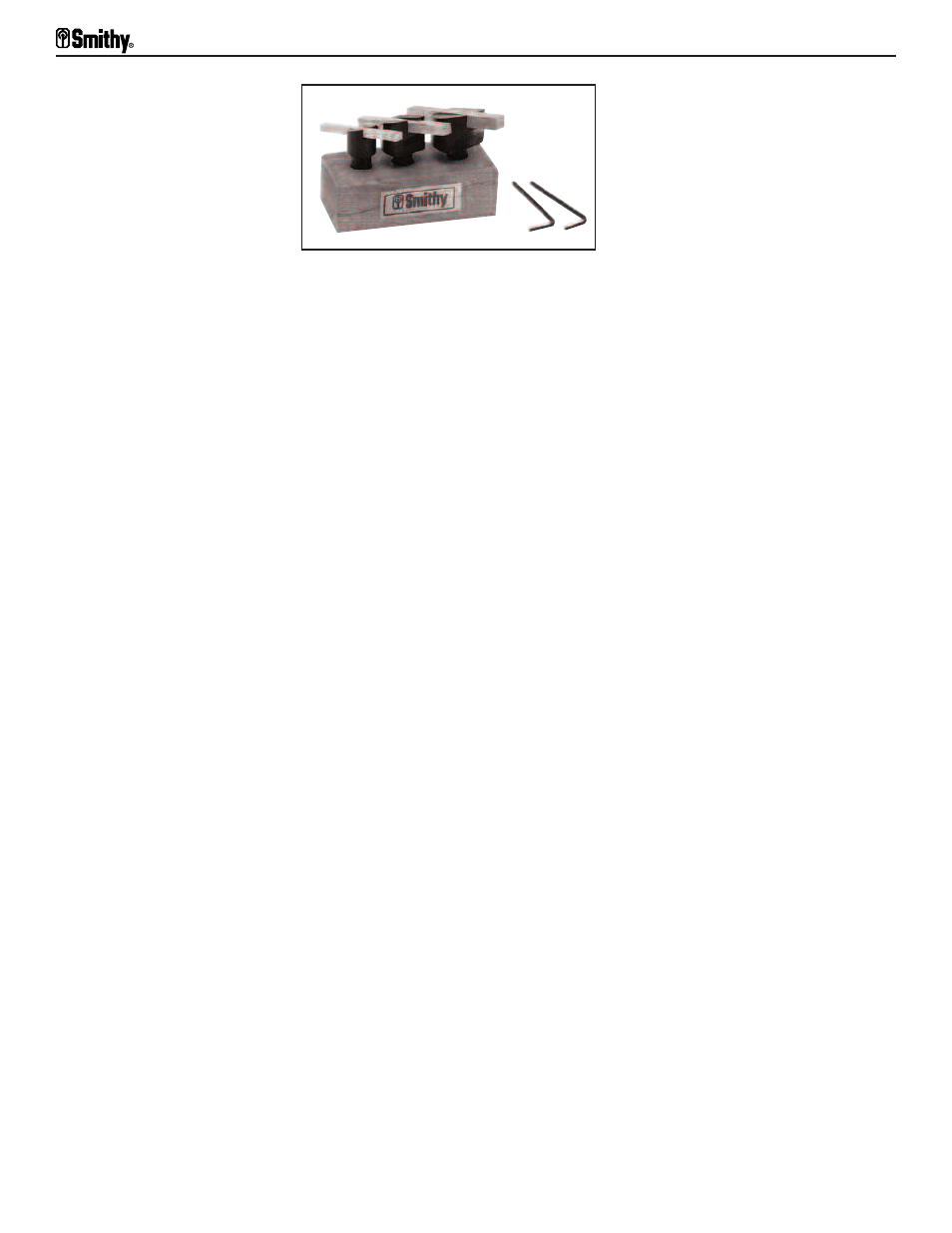Using cutting fluid, Tool grinding, Speeds and feeds for milling – Smithy Midas 1220 LTD User Manual
Page 86

Figure 17.9 Flycutters take light face cuts from large surface areas.
Using Cutting Fluid
Cutting fluids get rid of heat generated by the friction of the milling cutter against the
workpiece. They also lubricate the interface between the cutting edge and the workpiece
and flush chips away. You can apply fluid in a stream (flood) or as a mist.
We recommend cutting fluids for steel, aluminum, and copper alloys. With cast iron and
steel, however, they tend to reduce the life of carbide tools, leaving tiny cracks along the
cutting edge. Follow the advice of tool manufacturers to avoid tool failure. Materials such
as cast iron, brass, and plastics are often machined dry. You can use compressed air to
cool tools and clear chips away. When doing so, wear a face mask and protective
clothing (Figure 20.6), and be careful to keep cast-iron dust from getting between the
lathe and carriage ways.
Tool Grinding
Sharpen cutting tools when they become dull, or extreme forces may build up at the
cutting edge of the teeth, causing chipping or fracture. Dull cutters are also inefficient,
and regrinding very dull cutters shortens their life considerably.
The form of the cutting edge and the clearance back of the cutting edge (land) affect
cutter operation significantly. The angle formed by the land and a line tangent to the
cutter at the tooth tip is the primary clearance. The angle between the back of the land
and the heel of the tooth is the secondary clearance. Check both clearances and the rake.
Some cutters are sharpened on the periphery by grinding the land at a suitable angle.
They include cutters with straight or spiral teeth, angular cutters, side milling cutters, face
mills, end mills, and reamers.
You sharpen others by grinding the front faces of their teeth. Formed or relieved cutters,
for example, have profiles that must be preserved. This category includes all sorts of
formed cutters as well as cutters used for milling various regular and irregular shapes.
Speeds and Feeds for Milling
Milling cutting rates vary according to the machinability of the material being cut; whether
cutting fluid is used and, if so, what kind; the type, size, and material of the cutter and
the coarseness of its teeth; and the amount of metal being removed. Cutting speed for
Midas 1220 LTD Operator’s Manual
17-8
For Assistance: Call Toll Free 1-800-476-4849